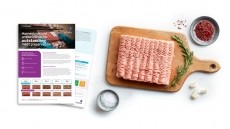'Alibi products' taint Norway's salt reduction progress

Manufacturers are gradually reducing the amount of salt in processed food products but this is happening too slowly, with the average Norwegian still consuming close to double the recommended daily amount, said a Norwegian-language report published today by Forbrukerradet, Norway’s Consumer Council.
“The findings [...] show that work is progressing but at different rates in different categories," the report said. "While in some groups there is a clear reduction of salt over time, other groups show only a weak and unclear tendency and, in some cases, nothing has happened.”
'Alibi products'
“There is also an impression of some manufacturers relying on some low-salt ‘alibi products’, while doing little in the large volume products," it noted.
These 'alibi products' could be bringing average salt levels per category down without necessarily meaning consumers are, on the whole, eating less salt. The lowest salt level in found in dry-cured salami was 2.1 grams (g) while the highest was 6.3 g.
Director for trade at the Consumer Council Gunstein Instefjord said producers of large volume products contribute "a lot of salt" to consumers' diet and should be aware of their "particular responsibility".
"It is also disappointing to note that innovations and new products in some cases are far above the salt target, as this helps to maintain the preference for salt flavour," the report noted.
The Council examined the salt in 15 food categories from 2011 to 2017, including seven types of meat products, three fish products and five cereal products.
Senior advisor at the Consumer Council Kaja Lund-Iversen told FoodNavigator the survey showed it was time to update the Nordic region's healthy eating Keyhole logo that manufacturers can voluntarily add to products if they meet certain nutrient requirements.
"In many cases, the salt target is below the limits in the Keyhole. This is why we argue that it is time to revise the Nordic Keyhole, especially with regard to salt limits."
Salt Partnership
In 2014, Norway's health authorities set a target of reducing the population intake by 15% by 2018 and 30% by 2025. The Salt Partnership, set up in 2015 and which brings together food manufacturers and caterers, R&D scientists, civil organisations and public health authorities, aims to achieve this.
However, the Consumer Council, which is a member of the Salt Partnership, said the data suggested that salt targets in some categories were set too low asthe average salt content was on a par with the 2015 target. "This shows the need to continue the Salt Partnership and set new concrete targets for salt reduction from 2019," it added.
The findings
The organisation bought products from nationwide food chains in Oslo and determined the salt content by reading the on-pack nutrition information, converting sodium declarations to salt where necessary.
In general, it found that levels are gradually falling.
In 2011, the average salt content in sausages was 1.9 g per 100 g and by 2017 this had fallen to 1.8. To qualify for the Keyhole symbol, the Nordic region’s healthy eating logo, sausages can contain a maximum of 2 g per 100 g.
Average salt levels in salami fell by 0.2 g from 4.9 g in 2013 to 4.7 g, and the maximum content recorded was 6.3 g. But most salamis were a long way off from achieving the 2.2 g needed for a Keyhole symbol.
Tested five times since 2011, fish cakes saw their average salt level drop from 1.6 to 1.3 g, with the Keyhole target of 1.5 g.
Average levels in fish spreads have increased by 0.1 g in the past four years while fish gratins stayed the same at 0.8 g.
Salt levels in crispbread have hovered around 1.2 and 1.1 g over the past six years, just above the Salt Partnership’s target of 1.0 g.
The report authors noted that, as the last tests were conducted in 2017, salt levels in some products may have changed since then.


























